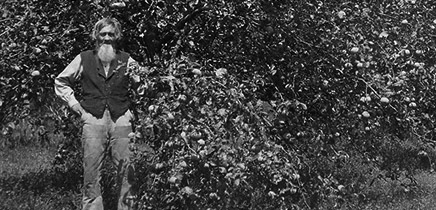Rapids are defined as a fast-flowing and turbulent part of the course of a river. Oftentimes, river travelers and hikers hear a set of rapids before catching sight of them. Rapids are often famous in and of themselves, but “Little Rapids” outside Carver is famous for the fur post that once stood on the site.
Nothing remains of the Little Rapids Fur Post save an historical marker nearby. But, in the early to mid-1800s, the post was a bustling hub of activity. The post was an active one in Minnesota thanks to the continued presence of Wahpeton Dakota in the area. From around 500 A.D. until the group left in 1851, during the treaty period, the group relied on summer planting and abundant fish provided by the rapids and good soil in the area. This village is one of the few historic period Dakota villages, in the metro area, of which the exact location is known.
This continued occupancy made this site a prime spot for the fur trade. Archaeological evidence suggests the presence of a fur post on the site as early as 1787. Sometime between 1802-1805 (exact date varies by source), Jean-Baptiste Faribault set up shop on the site. Over the years, this post operated under both the British Northwest Fur Company, formed 1787 and in operation until the end of the War of 1812, and the American Fur Company, formed by John Jacob Astor in 1808 and in operation through 1851.
Jean-Baptiste Faribault severed ties with the Northwest Fur Company in 1809, moving to Prairie du Chien, Wisconsin to begin work with the American Fur Company. Sometime between 1821-1826 (again, sources vary), Faribault returned to work at the Little Rapids post. When not available, other traders took over for Faribault, Louis Provencalle among them. Provencalle also ran a post at Chaska. The Factor, or regional manager for many fur posts in this region, was Henry H. Sibley, between 1834-1851.
When Faribault returned to Minnesota, he settled in the town of Mendota as a farmer, and only operated Little Raids during the winter months. Furs were gathered in winter more often because the animals pelt was thicker and warmer, providing for a better coat. This made Other animals, such as mink, were brown ¾ of the year, and only had white fur in winter to blend in with their surroundings. However, this white fur was prized in Europe for fancier things such a coronation robes.
When Jean-Baptiste Faribault chose to retire to his Mendota farm in 1844, control of the post passed to one of his sons, Oliver, who moved it to the other side of the rapids at Shakopee. In 1851, with the signing of the Traverse de Sioux and Mendota treaties, the fur trade in Minnesota essentially ended. The sight was forgotten until archaeologists conducted digs at the former Wahpeton Dakota village. The rapids remain popular with tourists and hikers, though today they are more often referred to as the Carver Rapids. Thus ended the relatively short history of the Little Rapids Fur Trading Post.
BIBLIOGRAPHY
Aby, Anne J., ed. The North Star State: A Minnesota History Reader. St. Paul: Minnesota Historical Society Press, 2002. (secondary)
Dictionary of Canadian Biography Online website. “Faribault, Jean-Baptiste.” Accessed and printed August 31, 2006. In Fur trade education program. Carver County Historical Society.
“Exploring the Great Northwest: The Fur Trade.” Educational program. Carver County Historical Society.
Lofstrom, Ted and Lynne VanBrocklin Spaeth. Carver County: A Guide to Its Historic and Prehistoric Places. St. Paul: Minnesota Historical Society Press, 1978. (secondary)
Minnesota Historical Society Historic Fort Snelling website. Faribault House. Accessed August 4, 2014. http://www.historicfortsnelling.org/sibley-house-historic-site/faribault-house
Olson, Mark W. “ The Reason We Are All Gathered Here.” Chaska Herald, September 17, 2009.
Rubinstein, Sarah P., compiler. Minnesota History Along the Highways: A Guide to Historic Markers and Sites. St. Paul: Minnesota Historical Society Press, 2003. (secondary)
Sibley, Henry H. “Memoir of Jean Baptiste Faribault.” University of California Digital Archives. Accessed August 4, 2014. https://archive.org/stream/memoirofjeanbapt00siblrich/memoirofjeanbapt00siblrich_djvu.txt
Spector, Janet D. What This Awl Means: Feminist Archaeology at a Wahpeton Dakota Village. St. Paul: Minnesota Historical Society Press, 1993.


